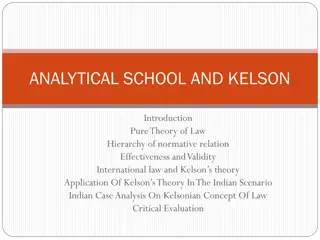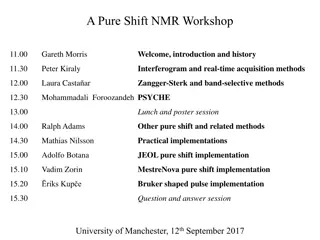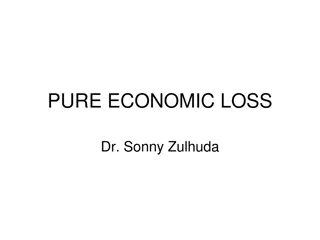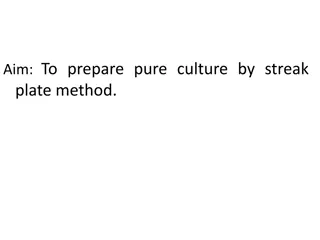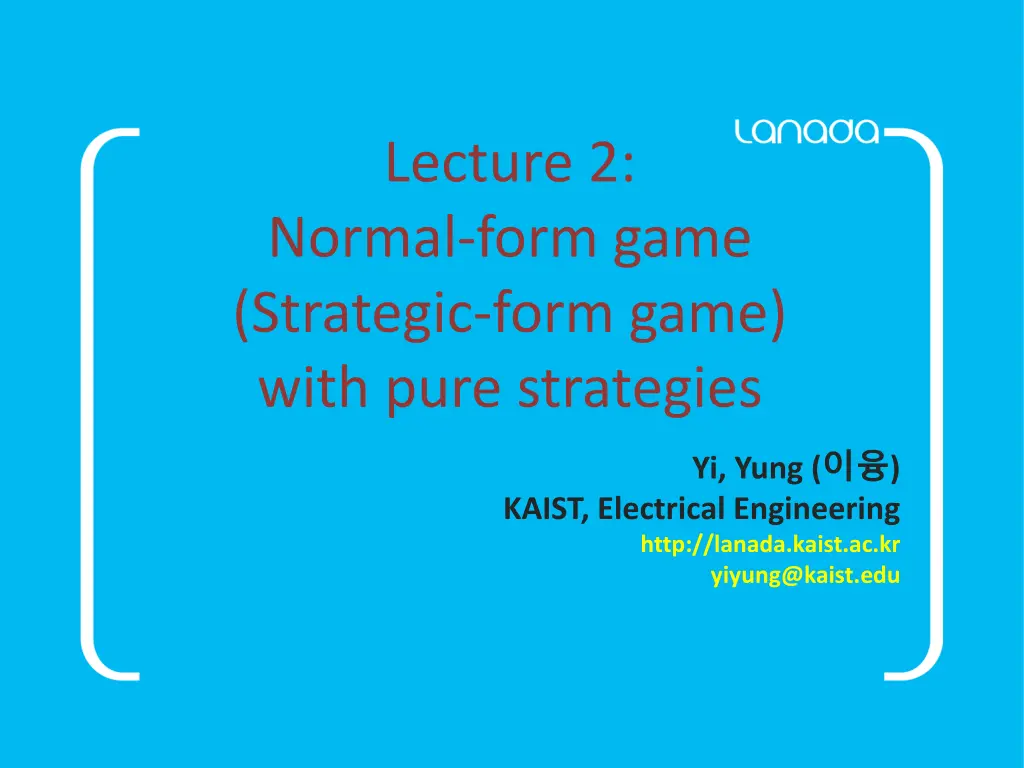
Understanding Normal-Form Games
Explore the concept of normal-form games in game theory, covering key topics such as pure strategies, matrix games, solution concepts, and analyzing game strategies. Learn about Nash equilibrium, dominant strategies, and the formal definition of strategic games.
Download Presentation

Please find below an Image/Link to download the presentation.
The content on the website is provided AS IS for your information and personal use only. It may not be sold, licensed, or shared on other websites without obtaining consent from the author. If you encounter any issues during the download, it is possible that the publisher has removed the file from their server.
You are allowed to download the files provided on this website for personal or commercial use, subject to the condition that they are used lawfully. All files are the property of their respective owners.
The content on the website is provided AS IS for your information and personal use only. It may not be sold, licensed, or shared on other websites without obtaining consent from the author.
E N D
Presentation Transcript
Lecture 2: Normal-form game (Strategic-form game) with pure strategies Yi, Yung ( ) KAIST, Electrical Engineering http://lanada.kaist.ac.kr yiyung@kaist.edu
Key Words Normal-form (Strategic form) Game Matrix game Strategy spaces are discrete Continuous-kernel game Strategy spaces are continuous Strictly dominated strategies Pure/Mixed strategy Saddle point, Nash equilibrium
Matrix Game: Pure Strategy
Matrix Game Representation of a game Simultaneous play players analyze the game and write their strategy on a paper Combination of strategies determines payoff Strategy set for Player 2 Strategy set for Player 1 Player 2 A B C A (2, 2) (0, 0) (-2, -1) Player 1 B (-5, 1) (3, 4) (3, -1) Payoff to Player 1 Payoff to Player 2
More Formal Game Definition Normal form (strategic) game a finite set N of players a set strategies for each player i payoff function for each player where s i iA (s = ) ui A N i N A is the set of strategies chosen by all players j N j A is the set of all possible outcomes is a set of strategies chosen by players defines an outcome s A ui: A
Two-person Zero-sum Games One of the first games studied most well understood type of game Players interest are strictly opposed what one player gains what the other loses game matrix has single entry (gain to player 1) Intuitive solution concept players maximize gains unique solution
Solution Concept A formal rule for predicting how a game will be played Describes which strategies will be adopted by palyers, and thus the result of the game Many kinds of solution concepts People s perspectives are different It does not talk about how players reach a solution concept Thus, naturally, it is an equilibrium concept .
Analyzing the Game: Domination Player 1 maximizes matrix entry, while player 2 minimizes Player 2 (12,-12) A 12 3 5 -16 B -1 1 2 1 C 1 3 4 2 D 0 A B C D Player 1 -18 3 -1 Strictly dominated strategy (dominated by C) Strictly dominated strategy (dominated by B)
Dominance Strategy S strictly dominates a strategy T if every possible outcome when S is chosen is better than the corresponding outcome when T is chosen Dominance Principle rational players never choose strictly dominated strategies Idea: Solve the game by eliminating strictly dominated strategies! iterated removal
Solving the Game Iterated removal of strictly dominated strategies Player 2 L -2 3 M -1 2 R 4 3 T B Player 1 Player 1 cannot remove any strategy (neither T or B dominates the other) Player 2 can remove strategy R (dominated by M) Player 1 can remove strategy T (dominated by B) Player 2 can remove strategy L (dominated by M) Solution: P1-> B, P2-> M payoff of 2
Solving the Game Removal of strictly dominates strategies does not always work Consider the game Player 2 A 12 5 -16 B -1 2 0 D 0 3 -1 A C D Player 1 Neither player has dominated strategies Requires another solution concept
Analyzing the Game Player 2 A 12 5 -16 B -1 2 0 D 0 3 -1 A C D Player 1 Outcome (C, B) seems stable saddle point of game
Saddle Points An outcome is a saddle point if it is both less than or equal to any value in its row and greater than or equal to any value in its column Saddle Point Principle Players should choose outcomes that are saddle points of the game Value of the game value of saddle point outcome if it exists
Why Play Saddle Points? Player 2 A 12 5 -16 B -1 2 0 D 0 3 -1 A C D Player 1 If player 1 believes player 2 will play B player 1 should play best response to B (which is C) If player 2 believes player 1 will play C player 2 should play best response to C (which is B)
Why Play Saddle Points? Player 2 A 12 5 -16 B -1 2 0 D 0 3 -1 A C D Player 1 Why should player 1 believe player 2 will play B? playing B guarantees player 2 loses at most v (which is 2) Why should player 2 believe player 1 will play C? playing C guarantees player 1 wins at least v (which is 2) Powerful arguments to play saddle point!
Solving the Game (min-max algorithm) Player 2 A 4 B 3 2 5 8 C 2 0 1 -4 D 5 -1 3 -5 A B C D 2 -10 7 0 -10 1 -5 Player 1 7 8 2 5 choose minimum entry in each row choose the maximum among these this is maximin value choose maximum entry in each column choose the minimum among these this is the minimax value if minimax == maximin, then this is the saddle point of game
Multiple Saddle Points In general, game can have multiple saddle points Player 2 A 3 2 5 8 8 B 2 C 2 0 2 -4 2 D 5 -1 3 -5 5 A B C D 2 -10 2 0 2 -10 2 -5 Player 1
Games With no Saddle Points Player 2 A 2 B 0 C -1 A Player 1 B -5 3 1
Two-person Non-zero Sum Games Players are not strictly opposed payoff sum is non-zero Player 2 A B A 3, 4 2, 0 Player 1 B 5, 1 -1, 2 Situations where interest is not directly opposed
What is the Solution? Ideas of zero-sum game: saddle points pure strategy equilibrium no pure strategy eq. Player 2 Player 2 A B A B A 5, 0 -1, 4 Player 1 A 5, 4 2, 0 Player 1 B 3, 2 2, 1 B 3, 1 -1, 2
Nash equilibrium A Nash equilibrium is a strategy profile s* with the property that no player i can do better by choosing a strategy different from s*, given that every other player j i . In other words, for each player i with payoff function ui, No user can change its payoff by unilaterally changing its strategy, i.e., changing its strategy while s-iis fixed
Multiple Solution Problem Games can have multiple equilibria not equivalent: payoff is different not interchangeable: playing an equilibrium strategy does not lead to equilibrium Player 2 A B A 1, 4 1, 1 Player 1 B 0, 1 2, 2 equilibria
Ex 1: Coordination game Two drivers, driving towards each other
Ex 2: Matching Pennies game Each player shows her coin. Same side Player 1 pockets both, and Player 2 does otherwi se.
Ex 3: Battle of the Sexes Game Tries to see a movie Husband: Lethal Weapon , Wife: Wondrous Love




